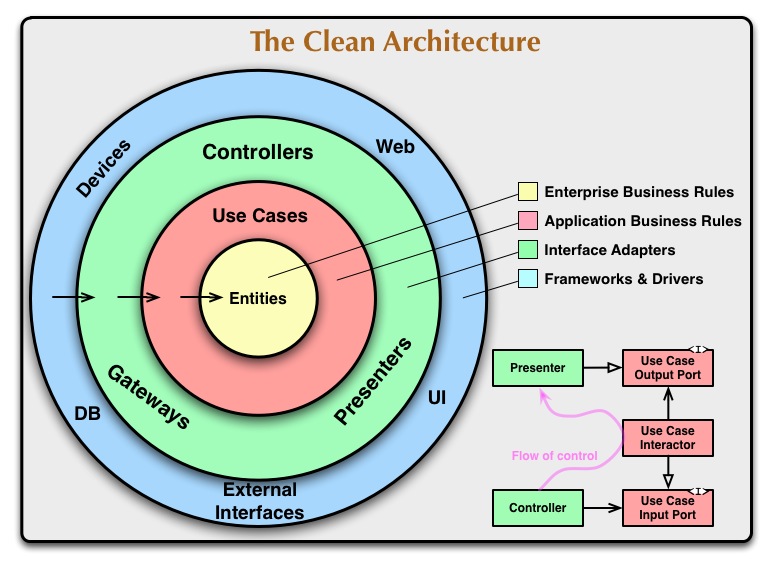
Next.js ^12 + TypeScript + Prisma + Chakra UI starter packed with useful development features.
I've adopted industries best practices into this template from my professional experience working in big tech, startups and YC companies.
Made by Nam Dao
-
Please set up the Google OAuth 2.0 API & Credentials by following this tutorial
-
Make sure you have the following
.envfile present.DATABASE_URL= Your PostgreSQL url GOOGLE_ID= Your Google Credentials API ID for NextAuth GOOGLE_SECRET= Your Google Credentials API secret for NextAuth SECRET= A secret string used to sign the JWT token for NextAuth -
Spin up docker and start the postgreSQL via docker compose.
-
Run
npx prisma db push. Make sure it is pointed at the local db. -
Run
npm run dev. -
Deploy to Vercel for free 😎
- Authentication using NextAuth with Google Login.
- PostgreSQL and Prisma ORM.
- Protected vs public API routes.
- API schema validation using JOI validator.
- Data fetching using SWR.
- Testing using jest and jest-mock-extended
- Logging using Pino (recommended by Next.js official docs)
- Error handling.
- Typescript
- Automatic build & testing with GitHub Actions
- Using Uncle Bob's Clean Architecture for backend codebase.
- Create React components faster with component library using Chakra UI.
- Docker compose for running the app locally.
- Eslint and Prettier for code formatting.
- lint-staged and pretty-quick for running linting on staged files.
- Using nvm (node version manager) so everyone in the team is using the same version of node.
- Depful for keeping the dependencies up to date.
Below are some of the best practices used when creating this project. I've included this section to explain the reasoning behind my decisions.
The structure of the backend code has been inspired by Uncle Bob's Clean architecture. But what is Clean Architecture?
The overriding rule that makes this architecture work is The Dependency Rule. This rule says that source code dependencies can only point inwards. Nothing in an inner circle can know anything at all about something in an outer circle.
Following this patter, the code base is organised into the following layers:
This layer is responsible for receiving requests from the client and sending responses back to the client. Some of its responsibilities are:
- Error handling
- Authentication
- Authorization
- API schema validation
It should not need to know any business logic or data access logic.
This layer is responsible for business logic. You will do most of the heavy lifting here.
This layer is responsible for data access logic.
API Layer -> Service Layer -> Repository Layer
Folder structure TODOService layer and Repository layer is written in classes, so that we can mock and test them later on.
As a result, we need to manually instantiate them in the buildServices.ts file and use them as Services.[service name] in the API layer.
Note: Yes, I do agree that this is a little bit manual and messy. There are libraries out there to help us do DI in TS/Nodejs but its not nice.
The decision to adopt the DI pattern was not an easy one, but I believe that writing testable code is crucial to building a reliable application, so here we are.
This is hands down one of the harder features to implement, and it could take up to a week of dev time to get it done.
Luckily, Next.js has provided us with NextAuth library, which allows us to do all of the authentication out of the box.
Please get the Google OAuth 2.0 Credentials by following this https://next-auth.js.org/providers/google
All the user data is stored in the database (see schema.prisma file). Passwords are salted and hashed automatically.
Use the getToken method from NextAuth to verify the validity of the user's JWT token in the backend.
const token = await getToken({
req,
secret: process.env.SECRET, // The secret used to sign the JWT token.
});If the token is outdated or is tampered with, it will return null.
If a user tries to do a privileged action, make sure that they have enough permission to do it.
In my example here, a user can only update a product if it BELONGS to them. So I do a check with prisma to make sure that its the case.
async updateOneProduct(
...
) {
prisma.product.updateMany({
where: {
id: where.id,
userId: where.userId, // <-- Check to make sure that the user is authorized to make such action.
},
...
});
}NextAuth provides us with 2 useful functions for the frontend.
Signin
signIn('google', {callbackUrl: `/`})Signout
signOut({ callbackUrl: '/' });NextAuth provides a function called useSession.
const Header = () => {
const { data: session, status } = useSession();
return (
<div>
...
</div>
);
};- If
statusis'unauthenticated', they're not logged in. - You can also access user email, id, name etc from the
dataobject.
It is important to sanitize/validate the incoming requests to the API before running ANY business logic. There are numbers of libraries out there that can do JSON validation, but I've found JOI to be the easiest to use.
For example, if you're expecting a request to the API that has name, price and description fields,
simply define a schema:
import { Joi } from '@hapi/joi';
const schema = Joi.object({
name: Joi.string().required(),
price: Joi.number().required(),
description: Joi.string().required(),
});Then you can use the schema to validate the incoming request:
const data = {
name: 'Product 1',
price: 100,
description: 'This is a product',
};
await schema.validateAsync(data);It is recommended to wrap the validateAsync call in a try catch block to catch any errors and return
an appropriate response to the client.
For observability, it is important to have consistent logging across the application. In this template here, I've used Pino for logging, as recommended by Next.js official docs.
- For general logging, use the
logger.info()level. - For any user errors, use the
logger.warn()level. - For any server errors, use the
error()level.
When you're logging something, you can also pass in extra data to the logger:
logger.info({ name: "Dyson hair dryer", price: 100 }, 'Purchased a product');When you're writing anything, it is important to wrap your code in try catch blocks.
Especially for APIs, as if you don't do this, you'll run into runtime errors that are hard to debug.
See my example handleError function, which returns an appropriate message to the client when an error arises.
i.e api/products.ts
export default async function handle(
req: NextApiRequest,
res: NextApiResponse
) {
try {
// Your code goes here
throw new Error('Something went wrong');
} catch (error) {
// This will capture the error above, log it and send a response to the client.
handleError(error, res);
}
}When throwing a Http Error, you can use my helper HttpError class which works in conjunction with the handleError function.
if (!product) {
throw new HttpError(404, 'Product not found', { id: productId });
}There are many ways to interact with the Database. You can write straight SQLs, use ORMs or even both. All the methods are valid if you understand the tradeoffs.
My three key reasons for choosing Prisma are:
- Ease of use. God damn it feels good.
- Amazing auto type generation that can be used throughout the codebase.
- Backed by actual investors.
The source of truth for the database schema lives inside the prisma/schema.prisma file.
See the Prisma documentation for more details. To use prisma types:
import { Prisma } from '@prisma/client';
async function deleteOneProduct(where: Prisma.ProductWhereInput) // <- Use the prisma types like this
{
// data access code...
}- Edit the
prisma/schema.prismafile. - Run
npx prisma formatto format the schema. - Run
npx prisma generateto generate the typescript types. This will modify the files insidenode_modules. - TODO: Run
npx prisma migrateto migrate the schema.
Note: The downside of using the Prisma ORM is that later on, when you need to make a complex nested query, Prisma may generate a really inefficient query that can hung the database. I've seen this before in production which caused our whole database to become unresponsive. We ended up writing raw SQL for this query instead. However, even though edge cases like this exist, I would still recommend using the Prisma because the other 98% with the added productivity justifies it.
Testing is always a controversial topic, especially in the startup world. My experience has taught me that when you're hacking together a project for an MVP or building a PoC, don't even think about it. Why spend all the effort writing test cases (which btw takes a long time) when the code could be torn down at any time. However, if your intension is to write code that won't be torn down, please write tests!
I've adopoted dependnecy injection for our backend code. Its basiclaly a design pattern where an object receives other objects that it depends on, usually through the constructor. This will allow us to mock dependencies easier later on.
For example, if you have a file called productService.ts, a test file should be called productService.test.ts.
Let's say you want to test that the ProductService.deleteOneProduct() method actually called the ProductRepository.deleteOneProduct() in ProductService class.
productService.ts
export class ProductService {
constructor(private productRepository: ProductRepository) {}
async getManyProducts(): Promise<Product[]> {
...
}
async deleteOneProduct(where: Prisma.ProductWhereInput): Promise<void> {
...
}
}Your test file will look like this productService.test.ts:
describe('ProductService', () => {
const mockProductRepository = mock<ProductRepository>();
let productService: ProductService;
beforeEach(() => {
productService = new ProductService(mockProductRepository);
});
describe('deleteOneProduct', () => {
test('should call ProductRepository.deleteOneProduct', async () => {
const where = { id: '1', userId: 'nam' };
await productService.deleteOneProduct(where);
expect(mockProductRepository.deleteOneProduct).toHaveBeenCalledWith(
where
);
});
});
});Where:
- The first
describe()specifies the class name. - we define all the dependnecies we need to mock using
mockfromjest-mock-extended. - Do any pre testing logic in
beforeEach(). - The second
describe()specifies the method name. - Test name should follow the format
'should (logic)'
We're using GitHub Actions to run npm run build and npm test on commits and PRs to the main branch.
Once a new commit is pushed to the main branch, vercel detects that and rebuilds the application for us.
Sending request to the server from the client is quite simple.
SWR is a React Hooks library for data fetching, that we're using in this project (recommended by the official Next.js docs) This is because SWR library allows us to re-validate the data / do automatic polling.
Example of calling api/products endpoint in index.tsx with 1s refresh interval.
const Home: NextPage = () => {
const { data } = useSWR('/api/products', fetcher, {
refreshInterval: 1000, // default is no polling.
});
...
return (
<div>
...
</div>
);
};We use the axios library for these requests. Make use of my requests wrapper function I wrote inside lib/utils/requests.ts, as you can decide what to do when an error arises, on a global level. I recommend displaying an error toast there.
As your team scale, it is important to have a code style consistency.
- Prettier & Eslint is used for keeping the code format consistent.
- Husky is used for running eslint & prettier tasks at pre-commit.
- Make sure that files and variables are
camelCased.
Always looking for feedbacks and contributors! Please open an issue or a PR if you have any suggestions 😁
